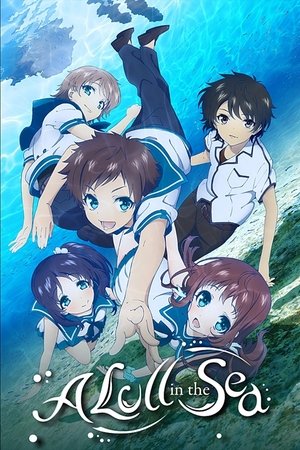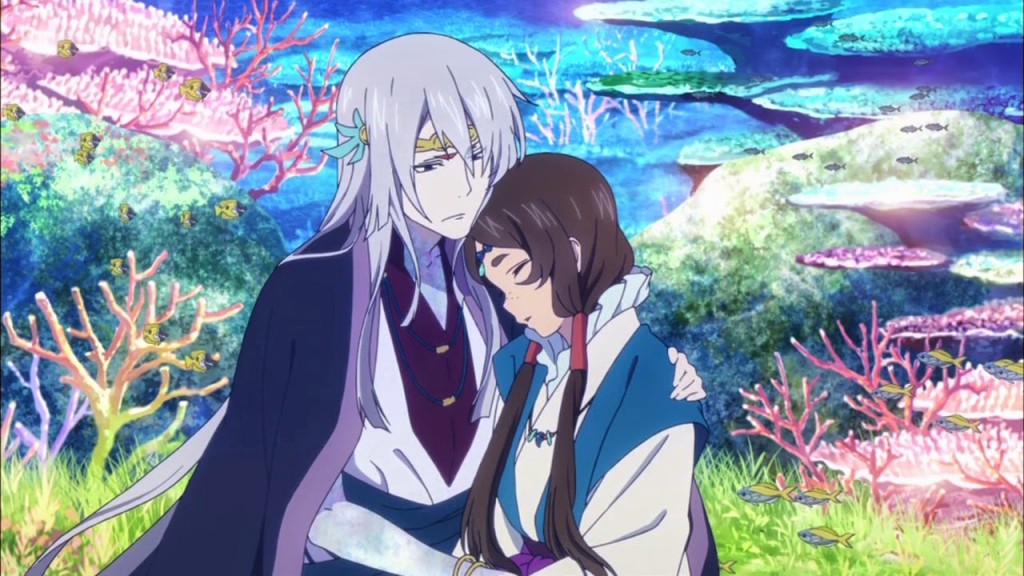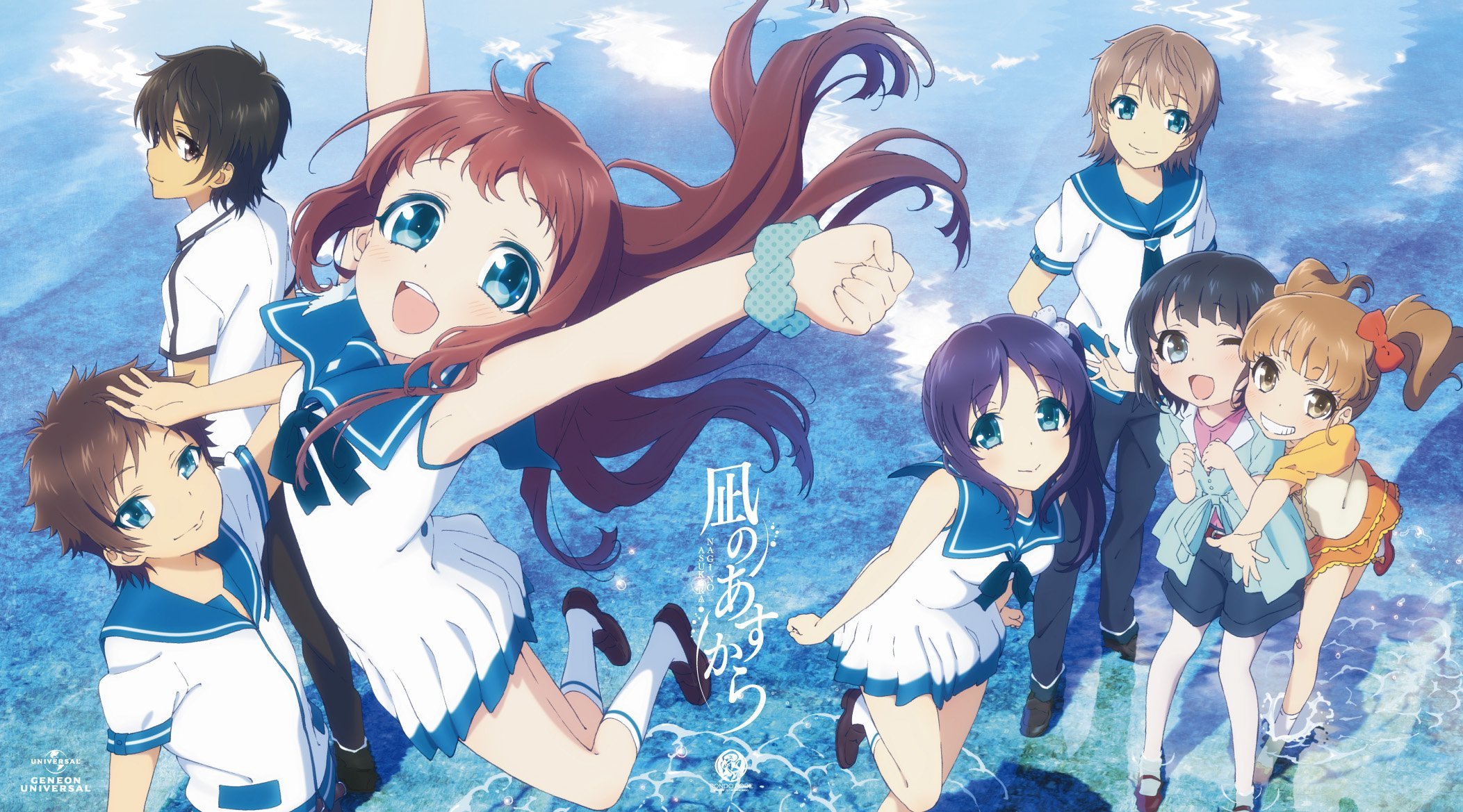 |
Nagi-Asu: A Lull in the Sea |
| Network: Tokyo MXGenre: AnimationSeasons: 1Episodes: 26 | |
OverviewLong ago, all humans lived beneath the sea. However, some people preferred the surface and abandoned living underwater permanently. As a consequence, they were stripped of their god-given protection called "Ena" which allowed them to breathe underwater. Over time, the rift between the denizens of the sea and of the surface widened, although contact between the two peoples still existed. This show follows the story of Hikari Sakishima and Manaka Mukaido, along with their childhood friends Chisaki Hiradaira and Kaname Isaki, who are forced to leave the sea and attend a school on the surface. There, the group also meets Tsumugu Kihara, a fellow student and fisherman who loves the sea. Hikari and his friends' lives are bound to change as they have to deal with the deep-seated hatred and discrimination between the people of sea and of the surface, the storms in their personal lives, as well as an impending tempest which may spell doom for all who dwell on the surface. |
Nagi no Asukara’s Finale: A Mix of Emotions
As we reflect on the final episode of Nagi no Asukara, a whirlwind of thoughts engulfs our minds. This series has been quite a rollercoaster, evoking a myriad of emotions. In this article, we will explore the finale of NagiAsu, exploring its pros and cons, and analyzing the overall impact it had on the viewers.
Brace yourselves for a comprehensive breakdown of this visually stunning and sometimes frustrating anime.
A Stunning Visual Experience
Discussing the positives of NagiAsu inevitably leads us to one standout aspect: its breathtaking visuals. P.A. Works, known for its ability to create emotionally captivating scenes, truly outdid themselves in this series. The watercolor aesthetics perfectly complement the studio’s artistic sensibility. From start to finish, the visual quality remained exceptional, with the finale showcasing some particularly striking shots. Each frame painted an intricate narrative, capturing the essence of the story without relying heavily on dialogue. In terms of visual appeal, NagiAsu easily rivals the likes of Hyouka, making it a true masterpiece in this regard.

Okada’s Signature Style
However, it wouldn’t be an Okada Mari production without her signature elements – tears, dramatic moments, and an occasional lack of impact. The finale, though visually stunning, still fell victim to some of these tendencies. Interestingly, one of the most compelling parts of the episode revolved around Ojoshi-sama, a character reminiscent of Tamako from Tamako Market. Her ill-fated relationship with the Sea God served as a backdrop for the entire series, adding a touch of grace and subtlety that often eluded the rest of the narrative. This glimpse into another character’s story left us yearning for more, longing for a deeper exploration of her experiences.
The Bittersweet Sense of Incompleteness
Throughout the series, NagiAsu tantalized its viewers with insightful relationships and compelling storylines. Unfortunately, the finale struggled to provide the necessary closure, leaving a sense of incompleteness. The reunion between Hikari and his father, Tomoru, served as a prime example. Despite their years of separation, there was an alarming lack of physical contact between them. Surprisingly, it was Miuna who received affection from Tomoru, paralleling Manaka’s choice to embrace Miuna during their reunion on the surface. Symbolic or not, these choices left us wanting more substantial emotional resolutions for the characters we had invested in.
A Conclusion by the Book
In a somewhat ironic twist, the ending of NagiAsu adhered to traditional storytelling conventions. Manaka ended up with Hikari, but their connection lacked the necessary acknowledgment and emotional depth. Tsumugu and Chisaki found each other, leaving Kaname feeling left out and forgotten. Key storylines, such as the fate of the land and the clash of cultures, were briefly touched upon in the final moments, reminding us of their intriguing potential before being abandoned. While the ending may have felt insubstantial, it did succeed in staying true to the central theme – the bittersweet nature of love and the cyclical patterns of life. This graceful execution paid tribute to the essence of P.A. Works’ storytelling philosophy.
The Ever-Evolving Perception of NagiAsu
As time passes, it will be fascinating to witness the changing perception of NagiAsu. Undoubtedly, the series offered outstanding moments and remarkable qualities. However, its significant flaws and the impact of certain narrative choices cannot be ignored. The use of a timeskip, for example, proved to be a double-edged sword that hindered the overall success of the show. While intended to expand emotional depth, it also led to the neglect of previously established plotlines. The first cour of NagiAsu showcased Okada’s undeniable talent, while the second cour sometimes succumbed to her less favorable tendencies. Nevertheless, the series remained an engaging experience, capturing the imagination and displaying the full potential of anime as an art form.
Final Thoughts
In conclusion, NagiAsu’s finale left us with mixed emotions. The breathtaking visuals, synonymous with the studio’s excellence, took our breath away. However, the lack of closure for certain characters and storylines left us yearning for more substantial resolutions. Ultimately, NagiAsu stands as a memorable series, firmly establishing itself as a visually stunning and emotionally captivating production. It may not have satisfied all expectations, but its impact cannot be denied.
Frequently Asked Questions
1. Will there be a sequel to NagiAsu?
As of now, there are no official announcements regarding a sequel to NagiAsu. However, anime franchises often surprise fans with unexpected follow-ups, so there is always a possibility in the future.
2. What is the significance of the watercolor aesthetics in NagiAsu?
The watercolor aesthetics in NagiAsu serve as a visual representation of the ethereal and emotional nature of the series. They contribute to the overall atmosphere and help immerse viewers in the world of the characters.
3. Why did some storylines and character relationships feel underdeveloped in the finale?
The limited runtime of the finale episode prevented a comprehensive exploration of every storyline and character relationship. Sometimes, a lack of screen time and the complexity of the narrative can lead to certain aspects feeling unresolved or rushed.
4. How does NagiAsu compare to other works by Okada Mari?
NagiAsu shares similarities with Okada Mari’s previous work, Hanasaku Iroha. Both shows exhibit Okada’s unique writing style and occasional inconsistencies. While NagiAsu is considered the slightly superior work overall, both series showcase her undeniable talent and desire to take risks in storytelling.
5. Is NagiAsu recommended for viewers looking for a visually stunning anime?
Absolutely! NagiAsu’s exceptional visuals, particularly its watercolor art style, make it a visually captivating experience. If you appreciate anime that prioritizes stunning aesthetics, NagiAsu is undoubtedly worth watching.
Nagi no Asukara Review
Overall
Summary
NagiAsu’s finale left us with mixed emotions. The breathtaking visuals, synonymous with the studio’s excellence, took our breath away. However, the lack of closure for certain characters and storylines left us yearning for more substantial resolutions. Ultimately, NagiAsu stands as a memorable series, firmly establishing itself as a visually stunning and emotionally captivating production.

